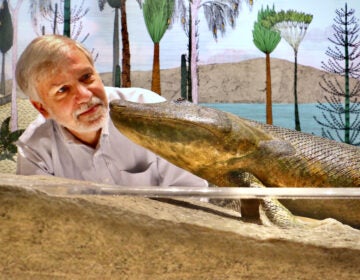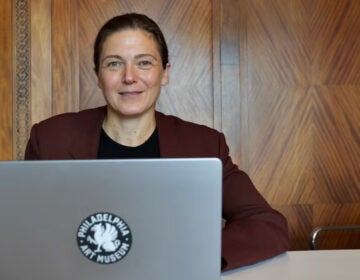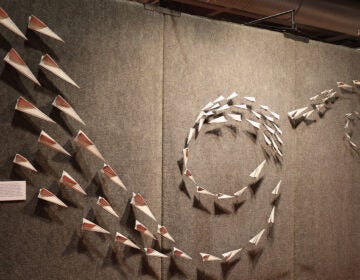Weave Your TV: Stephen Burks’ pandemic design thinking at the Philadelphia Museum of Art
The housewares and sculpture in Stephen Burks’ “Shelter in Place” design exhibition takes cues from the early pandemic shutdown.
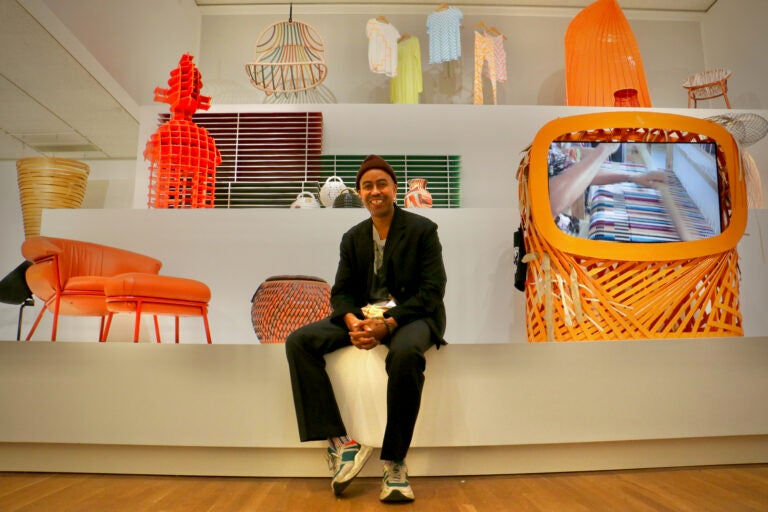
“Stephen Burks: Shelter in Place” at the Philadelphia Museum of Art features works from the past 10 years that came out of Burks highly collaborative design practice. (Emma Lee/WHYY)
From Philly and the Pa. suburbs to South Jersey and Delaware, what would you like WHYY News to cover? Let us know!
The first thing visitors encounter when entering the “Stephen Burks: Shelter in Place” exhibition at the Philadelphia Museum of Art is a television. Like many homes, the TV takes pride of place.
A large flat-screen television is suspended inside an upright woven stand, like an entertainment system fabricated as a basket painted orange.
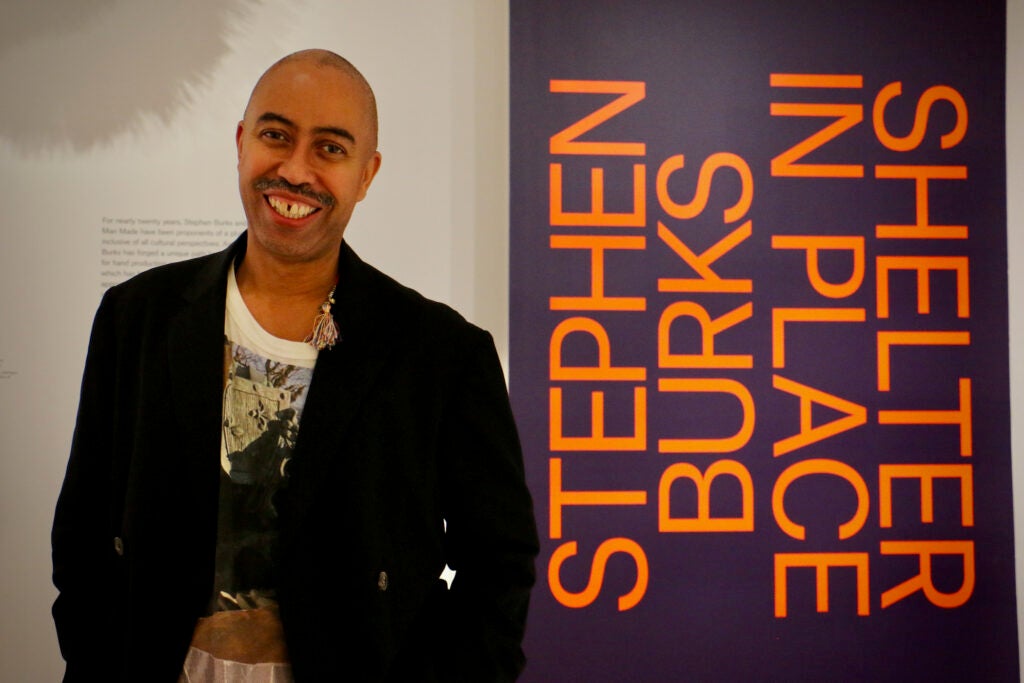
Like any good designer, Burks approached the TV like a problem to be solved.
“Malika and I didn’t realize that we had a TV,” he said referring to his partner Malika Leiper. “We’d moved into this Brooklyn apartment and, like many people in the city, when you move into a new apartment you inherit things that the previous tenants left behind.”
Burks and Leiper discovered a flat-screen television stashed in a closet. They were unwilling to devote wall space to it.
“We collect photography and couldn’t imagine placing a black mirror on the wall next to things that we consider beautiful,” he said.
So the TV went under the bed. When they felt like watching, they would slide out the TV and watch it from above, looking down to the floor. Then the pandemic shutdown happened in 2020, forcing them to spend more time at home and, as a matter of course, found themselves watching more TV.
“That sort of one-way transmission of commerce really bothered us,” said Burks. “How could we allow the television to be more of a two-way project, allow families to have a dialogue with what’s being transmitted?”
The solution is “Woven TV,” a basketry stand into which a person can interweave their own personal objects – such as prayer beads, as Burks did, and an Art Museum tote bag – giving the viewer agency to manipulate the TV in their own fashion. In a sense, talk back to the box.
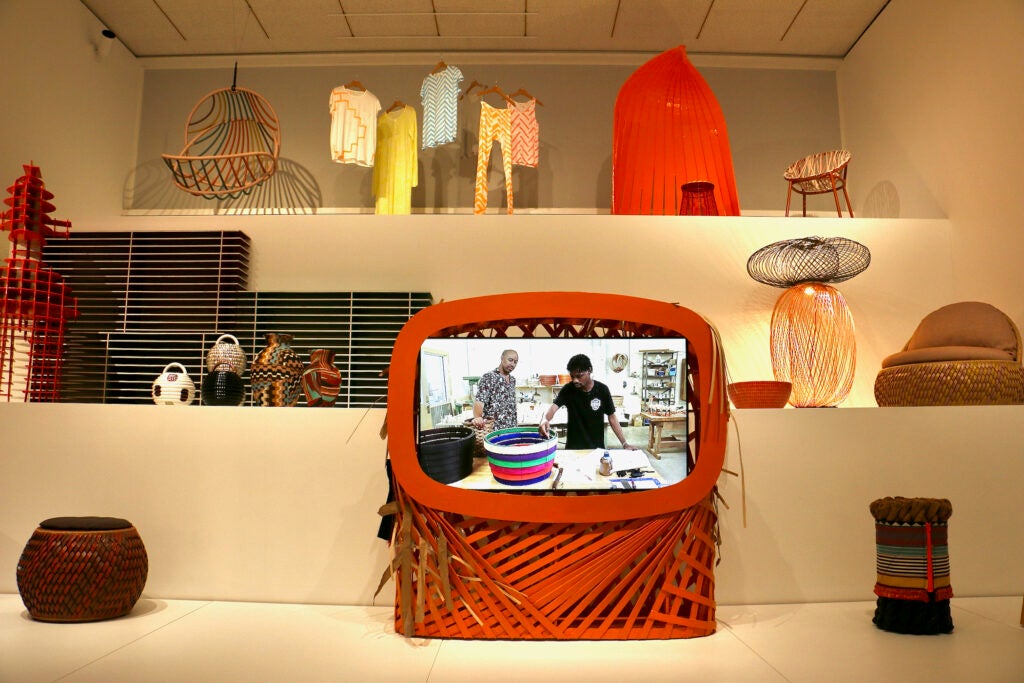
“Stephen Burks: Shelter in Place” features works from the past 10 years that came out of Burks’ highly collaborative design practice. He often collaborates with craft artisans around the world, particularly weavers in the Philippines and Senegal who inspired Dala, a line of woven outdoor furniture from the Dedon company.
The Dala line is based on rounded, powder-coated aluminum grids of pre-determined shapes, into which artisans weave colored fibers to create unique pieces.
Burks’ design ethos is to integrate handcraft into industrial manufacturing.
“In industrial production it’s typically believed that the more times the hand touches something, the more expensive it becomes. So the hand is eliminated from industrial production. The machines should be efficient enough to produce the product as quickly as possible,” he said. “We believe that the more times the hand touches something the more value we can contribute. We like to use the hand where the hand is most useful, and the machine where the machine is most useful.”
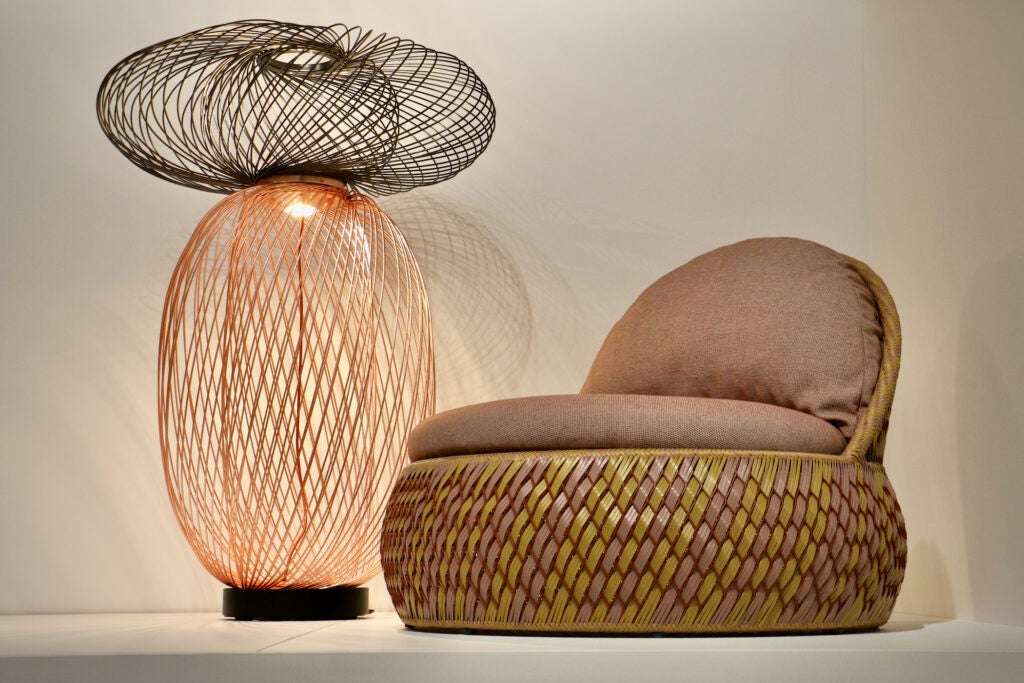
Not just more hands: Burks would like to see more diversity of hands contributing to design. He said he has collaborated with hundreds of people across six continents and 20 countries in order to fulfill a mission of pluralistic design.
“All of us, regardless of how we’re educated or where we’re from in the world, have ideas,” he said. “We dream and we manifest those expressions through how we manipulate material around us.”

The Art Museum is presenting “Shelter in Place” on the occasion of awarding Burks its 37th annual Collab Design Excellence Award. The exhibition had previously been at the High Museum of Art in Atlanta, Georgia.
In Atlanta, the exhibition had more space to spread out. The single-gallery show at the Art Museum forced the exhibition to be pared down, but the room’s high-ceiling allowed the curatorial team to fabricate a tiered display, where objects are placed on three platforms of increasing height, like a giant stepladder.
“My inspiration was the Rocky steps,” Burks said. “What if we could tier the work and make greater use of the gallery’s height, and allow people to see things in the foreground and at a distance? Essentially making a kind of stadium: you walk in and see everything at the same time.”
The most recent work in “Shelter in Place ” came out of pandemic thinking. With more people spending more time at home, Burks considered that objects in the home take on greater significance. It could even approach something spiritual, as he suggests in “Spirit House,” a bright yellow talismanic structure on the scale of a dollhouse.
“Spirit House” is a design solution for an emotional problem: Burks said his son, Anwar, lost both of his maternal grandparents in the first month of the pandemic shutdown.
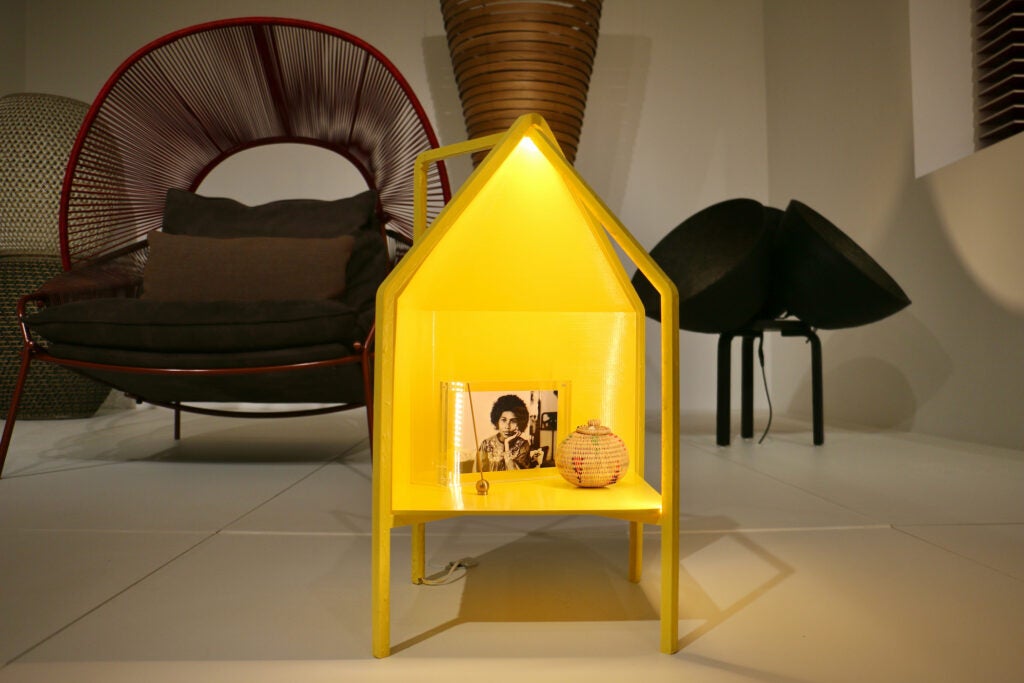
“Not knowing how to cope with that at home was a big problem for us, at a time when we couldn’t gather as communities and we couldn’t grieve as communities,” he said. “We borrowed from the Southeast Asian tradition of the spirit house. Anwar is Filipino. My partner Malika is Cambodian. We looked at those traditions where memorial and remembrance are part of the public sphere and a daily practice.”
In the exhibition, Burks’ “Spirit House” contains a small woven basket, a stick of incense, and a photo of the celebrated writer bell hooks, whom Burks knew toward the end of her life. She died two years ago.
“Shelter In Place” will be on view at the Philadelphia Museum of Art until April 14.

Get daily updates from WHYY News!
WHYY is your source for fact-based, in-depth journalism and information. As a nonprofit organization, we rely on financial support from readers like you. Please give today.



